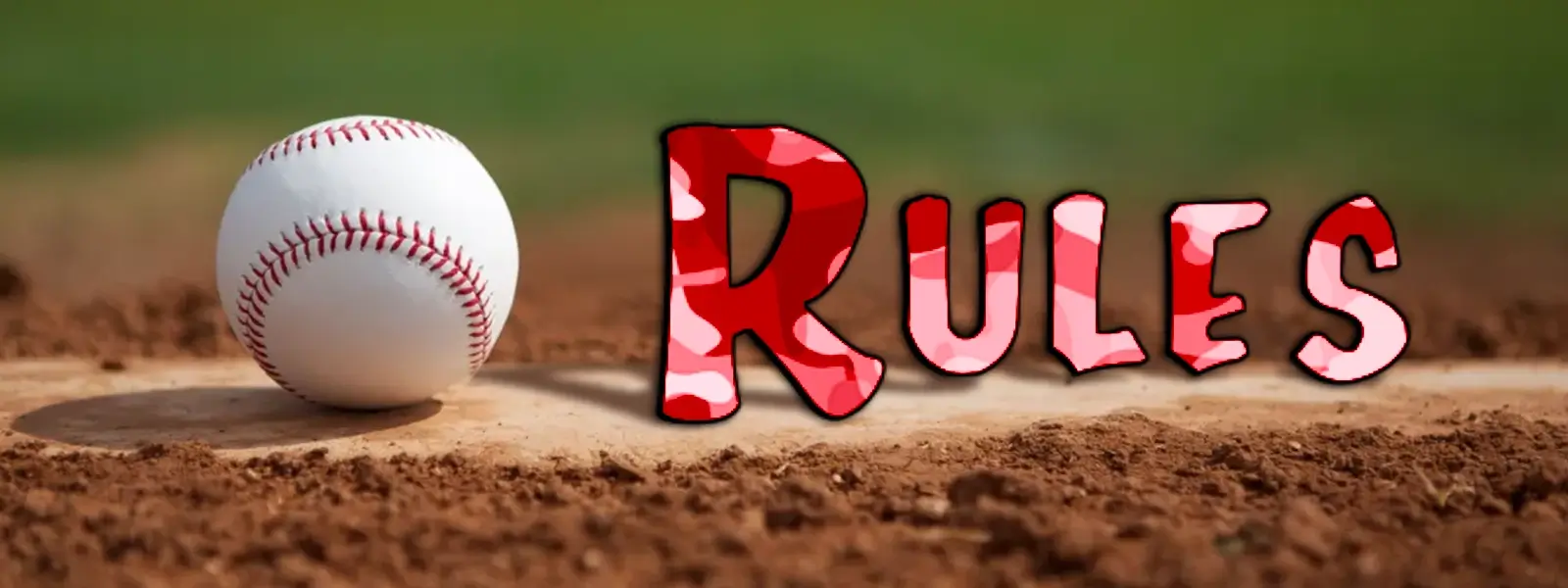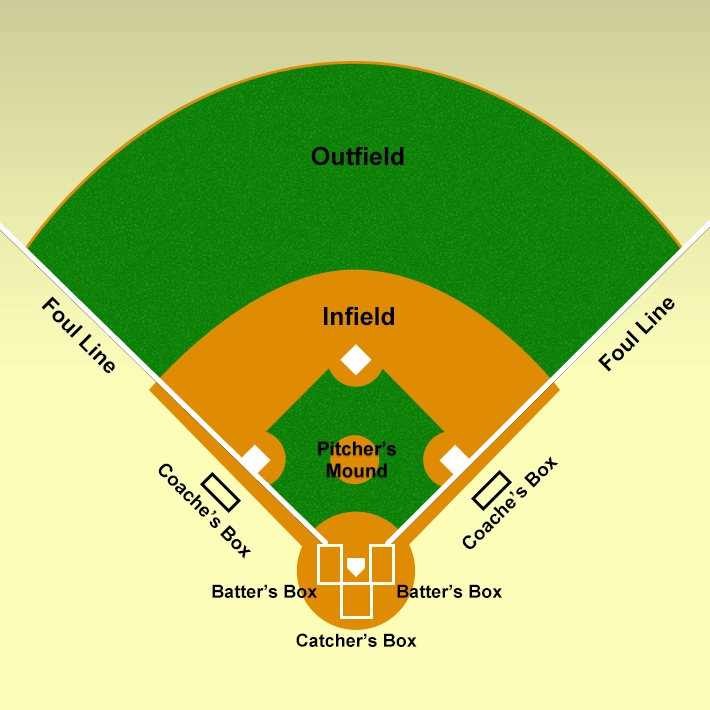
If you’ve always wanted to get into the game of baseball or you’re just looking to brush up on the fundamentals, understanding the rules is key. Each rule is designed to ensure fair and strategic competition. Therefore, keep reading this Guide to Understanding the Rules of baseball which covers everything from fundamental plays to game-changing regulations, baseball is a sport that values a deep knowledge of its rules.

Basic Rules of Baseball
The basic rules of baseball dictate the number of players on the field, the method of scoring, and the conduct of play. Understanding these rules is essential for any fan or player
Nine to Field, Nine to Bat:
A standard baseball team fields nine players, arranged in a specific formation depending on the situation
Innings and Outs:
A game is divided into nine innings, with each team having the chance to bat and field.
Scoring Runs:
Players score a run by crossing home plate, either due to a successful run of the bases – hitting a home run – or due to errors and walkovers.
Strikes, Balls, and Fouls:
Pitchers throw the ball, aiming for the strike zone. A ball that crosses through the strike zone and is not swung at is called a strike; three strikes and a batter is out. Conversely, four balls outside the strike zone result in a walk. Fouls are not counted as strikes unless a hitter has less than two strikes.
Baserunning Basics:
After hitting the ball fair and reaching first base, a runner can attempt to advance to second, third, or return to first. Runners must touch each base in order, without passing a preceding runner.
Stealing Bases:
Runners can attempt to “steal” a base while the pitcher is delivering the ball to the plate. This requires timing and speed to advance before a thrown ball from the catcher reaches the base.
The Force-Out:
Any baserunner must be tagged by the ball in the hand of a defensive player at the base they are required to advance to if a following runner obliges them to do so (known as a “force-out”).
Tagging Runners:
A tag out occurs when a runner is holding a base and the ball or a glove with the ball in it makes contact with any part of the runner’s body.
Umpires’ Decisions:
The umpire’s rulings are definitive and must be respected by players and coaches. Disagreements are not uncommon, but the umpire’s judgment is final.
Dugouts and Benches:
Both teams have a dugout or bench where players wait to bat or play defense. Only players, coaches, and necessary team personnel are allowed in the dugout or on the bench.
Batting Orders and Lineups:
A manager determines who will bat and in which order. Lineups can change each game and sometimes shift during the game based on substitutions.
Fair or Foul:
Whether a ball is fair or foul is determined by where it first touches the ground. For a hit to be fair, it must pass first or third base within the base’s territory.
No Underhand Pitching:
Pitching must be done overhand or sidearm. Underhand pitching is not allowed except in some women’s baseball leagues.
Outfield Fly Balls:
A fly ball hit into the outfield can result in a force out if an outfielder catches it before it touches the ground.
Equipment Rules:
Players must use regulation gloves, bats, helmets, and cleats. Any equipment that provides an unfair advantage or is unsafe is prohibited.
Advanced Rules of Baseball
Once you’ve aced the basics, it’s time to dig deeper. These advanced rules can significantly impact strategy and outcomes in high-stakes games. More detailed and nuanced rules come into play in specific game situations, such as the infield fly rule, the balk, and determining whether a ball is fair or foul.
The Infield Fly Rule:
This rule is designed to prevent infielders from intentionally dropping easy pop-ups to get double or triple plays. If, in the judgment of the umpire, a fly ball can be caught with ordinary effort, the batter is automatically out and runners can advance at their own risk.
The Balk:
A balk is an illegal motion by the pitcher with a baserunner on that requires all runners to advance one base and the batter remains at the plate. A second offense can result in ejection and/or suspension.
Tagging Up:
After a fly ball is caught, baserunners must touch their originating base before attempting to advance. Failure to tag up before leaving the base can result in being tagged out.
Dropped Third Strike Rule:
If the catcher fails to catch a third strike before it hits the ground, the batter can attempt to advance to first base and must be tagged or thrown out for the out to count.
The Designated Hitter Rule:
In some leagues, the designated hitter (DH) bats in place of the pitcher. This is not allowed in the National League but is a strategy in the American League.
Official Game Status:
To be considered a complete game, a game must last at least nine innings (or a regulation game as determined by the league), with the leading team in the ninth being declared the winner.
Mound Visits:
Limitations on how many times a manager or coach can visit the mound in a single game have been implemented by the MLB to speed up gameplay.
Running Outside the Baseline:
A runner is not allowed to run outside the baseline to dodge a tag. For example, they must stay within the first base lane while heading to the first base after hitting the ball.
Interference:
This occurs when a base runner intentionally interferes with the defensive play, such as getting in the way of a throw or running into another player.
Batting Order:
Once the batting order is set, it remains fixed for the game. Substitutes are allowed but must follow the batting order of the player they replace.
Safety Rules of Baseball
Baseball may be America’s pastime, but it still requires attention to safety, especially given the speed and force at which the game is played. Therefore, baseball has several safety rules in place to protect players. These include rules about sliding, collisions at home plate, and the use of protective equipment such as helmets and padding.
Safety and Catcher Gear:
The catcher’s gear includes a helmet, mask, chest protector, and shin guards. Catchers are the only fielders permitted to wear this equipment due to the close proximity of home plate.
Sliding Techniques:
Proper sliding techniques, such as sliding feet first and avoiding contact, are essential for player safety.
Leading with Feet, Not Spikes:
When sliding or running, players should lead with their feet or hands, not their spikes, to reduce the risk of injury to themselves and others.
Wearing the Correct Helmet:
Batters must wear a helmet with an earflap while at the plate. Base coaches and any runner on base must also wear helmets.
Concussion Protocols:
Concussion protocols are in place to protect players who experience a head injury. These rules are designed to ensure the player’s safety and well-being.
Equipment Maintenance:
Maintain baseball equipment regularly to ensure it’s in good working condition and won’t lead to accidents or injuries.
Understanding the Rules of Baseball is crucial for every player, coach, and fan of the game. Whether you’re new to the sport or a seasoned enthusiast, following these guidelines and the The Complete Guide to Understanding the Sport of Baseball will ensure an enjoyable and safe experience on the diamond. Now, grab your glove, step up to the plate, and show them what you’re made of!
